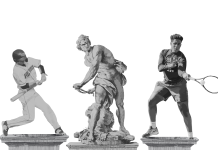After 30 years of St. Louis Intercollegiate Athletic Conference (SLIAC) play, Webster’s female
athletes stand out as some of the best, and they have the championships to prove it.
Webster is the most successful school in the SLIAC, with 83 overall championships as of May
2019. Principia College, the runner-up, has 69 as of May 2019. The Gorloks have also won the
SLIAC All-Sports Award 18 times since its inception roughly 20 years ago. Women are
responsible for the majority of those championships, despite a documented history of being
underrepresented overall in Webster University Sports.
In 44 of the 83 championships, 53% were won by women. Women’s cross country and soccer
won two more championships to bring the new school total to 85, which has not yet been added
to the SLIAC count. After winning the regular season title earlier this year, the women’s soccer
team leads all teams, regardless of gender with 15 regular season championships.
The volleyball team leads in tournament titles with 12, according to Webster Athletics. More
than half of the 44 inductees in the Webster Athletics Hall of Fame are also female.
Equity in Athletics Data Analysis (EADA), part of the Department of Education, shows that
from 2003 to 2017, Webster was a majority-female school, in terms of undergraduate students.
Yet, men led in sports participation every year, with exception to an even split of 99 each in 2011.
Scott Kilgallon, Webster’s director of athletics, provided more accurate figures than the EADA
had available. Kilgallon said there are 136 male athletes to 130 female athletes as of 2019, the
closest count since 2011.
Kilgallon studied Title IX for his thesis and attributes the decades-long disparity in athletic
participation to schools being slowing to embrace Title IX, with a shift beginning around the turn
of the millennium.
The Department of Education defines Title IX as a civil rights law passed in 1972 prohibiting
descrimination based on sex concerning any education program or activity recieving federal
assitance, like sports. While financial specifics were not disclosed, Kilgallon did say Webster
divides its resources equally between both male and female athletes.
“Back in 1972 andsadly for many years after, there weren’t opportunities for young girls to be in
organized sports. There was not opportunity to have appropriate coaching and facilities and all
those things. Not to say that there’s [not] still work to be done,” Kilgallon said. “The group of
women now that are college age, I believe over the last 15 years, I call that the Title IX
generation because these opportunities that were not available to women, in my opinion from ‘72
prior to that.”
Despite the success of female athletes, basketball player Addison Beussink noted an inherent
gender bias, a common criticism in sports.
“When it comes to game attendance, I feel like people are more inclined to attend men’s sports
over women’s, [whether] it be from high school all the way to the pros,” Beussink said. “For
example, very few people watch the WNBA, compared to the NBA. I feel like more people
enjoy watching men’s sports over women’s because as far as basketball goes, boys dunk and
play faster, so that makes it more fun to watch.”
Women are also underrepresented as a part of the Webster athletic department staff. Women
make up just 18 of 49 total staff members. Only two of the 12 current head coaches are women.
Kilgallon said the reason for this is because the coaching positions at Webster do not have a
high turnover rate. For example, women’s soccer coach Luigi Scire has been with Webster for
over 20 years.
However, the gender bias in sports extends beyond the field of play to the sports industry as a
whole and into the classroom. Adjunct Sports Communications professor Allison Levin’s
research concerns social and cultural issues of sports fandom, particularly baseball.
Levin expressed how women in sports are constantly challenged and how easily disagreements
break down to nothing more than insults. Issues like these are impacting diversity in her classes.
“As somebody who works in the industry, you don’t see a lot of women. You don’t see a lot of
people of color. You see a lot of white males. It’s heartbreaking to me when I walk into classes
that I teach and I see maybe one woman, I see one person of color,” Levin said. “I have a goal
and I think we’re starting to achieve it where we can be a program that is preparing men, women,
[people of] every background to be able to succeed in sports.”
Both Levin and Sports Communications program head Scott Jensen agreed interest in the
program is growing, but Jensen didn’t break down enrollment by gender. Instead, he noted the
program has around 25 students after graduating just two at one point.
Beussink did say she feels Webster’s male and female athletes have a good relationship and any
amount of progress is a step in the right direction.
“I think that as time has gone on, the prevalence of women in sports has definitely grown. For
example, women used to not be able to box. Today there are star boxing athletes that are female
and making a name for themselves in [what] is now even an Olympic sport,” Beussink said. “Do
I think it will ever be equal? No, but I do think that it has definitely gotten better.”



